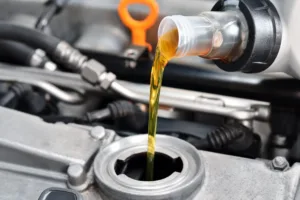Maximizing Your Car’s Lifespan: A Guide to Replacing Parts

As a responsible car owner, you understand the importance of regular maintenance to keep your vehicle running smoothly. However, one aspect that often gets overlooked is knowing when to replace parts. Proper maintenance not only ensures your safety on the road but also helps you save money in the long run by preventing costly repairs. At Utah Community Credit Union, we believe in helping our members with knowledge to make informed decisions about their vehicles. In this blog, Maximizing Your Car’s Lifespan: A Guide to Replacing Parts, we’ll discuss how often you should replace parts on your car to maximize its life and lower unexpected expenses.
Follow Manufacturer Recommendations:
Every vehicle comes with a manufacturer’s maintenance schedule outlining when certain parts should be inspected or replaced. It’s crucial to adhere to these recommendations to maintain your car’s warranty and ensure optimal performance. These schedules typically cover important components such as oil filters, air filters, spark plugs, and timing belts. By following these guidelines, you can address potential issues before they escalate into major problems.
Monitor Wear and Tear:
While manufacturer recommendations provide a baseline, it’s important to monitor your car for signs of wear and tear. Regularly inspecting key components such as brakes, tires, and suspension can help you identify potential problems early on. For example, if you notice uneven tire wear or hear squeaking noises when braking, it may indicate the need for new brake pads or rotors. Ignoring these warning signs can lead to safety hazards and expensive repairs down the line.
Consider Driving Conditions:
The frequency of part replacement can vary based on your driving habits and environmental conditions. If you often drive in stop-and-go traffic or harsh weather conditions, certain components may wear out faster than usual. Similarly, driving on rough terrain or unpaved roads can put added strain on your suspension and exhaust system. By taking these factors into account, you can adjust your maintenance schedule accordingly and ensure timely replacements.
Fluid Maintenance:
Regular fluid changes are important for keeping your car’s engine and other vital systems running smoothly. Engine oil, transmission fluid, coolant, and brake fluid all degrade over time and need to be replaced at specified intervals. Neglecting fluid maintenance can lead to engine damage, overheating, or brake failure. Be sure to check your car’s owner’s manual for regular fluid change intervals and stick to them.
Invest in Quality Parts:
When replacing parts that are worn out, it’s common to opt for the cheapest option available. However, quality parts can save you money in the long term by lasting longer and provide better performance. OEM (Original Equipment Manufacturer) parts are designed specifically for your vehicle and often come with warranties for added peace of mind. Additionally, talking with a trusted mechanic or car professional can help you make informed decisions about which parts are best suited for your car.
Stay Proactive:
Rather than waiting for parts to fail, adopt an early approach to maintenance. Regularly scheduled check ups and inspections can help prevent unexpected breakdowns and prolong your car’s lifespan. By staying ahead of potential issues, you can address them early on and avoid costly repairs down the line. Creating a maintenance calendar and sticking to it can help you stay organized and ensure no vital components are over looked.
Maximizing Your Car’s Life
Knowing when to replace parts on your car is important for maintaining its reliability, safety, and longevity. By following manufacturer recommendations, monitoring wear and tear, considering driving conditions, maintaining fluids, investing in quality parts, and staying proactive, you can increase your vehicle’s lifespan and lower unexpected expenses. At Utah Community Credit Union, we’re committed to helping our members make smart financial decisions, including those related to vehicle maintenance. By taking care of your car, you’re not just protecting your investment; you’re also making sure you have a safer and more enjoyable driving experience for years to come.


